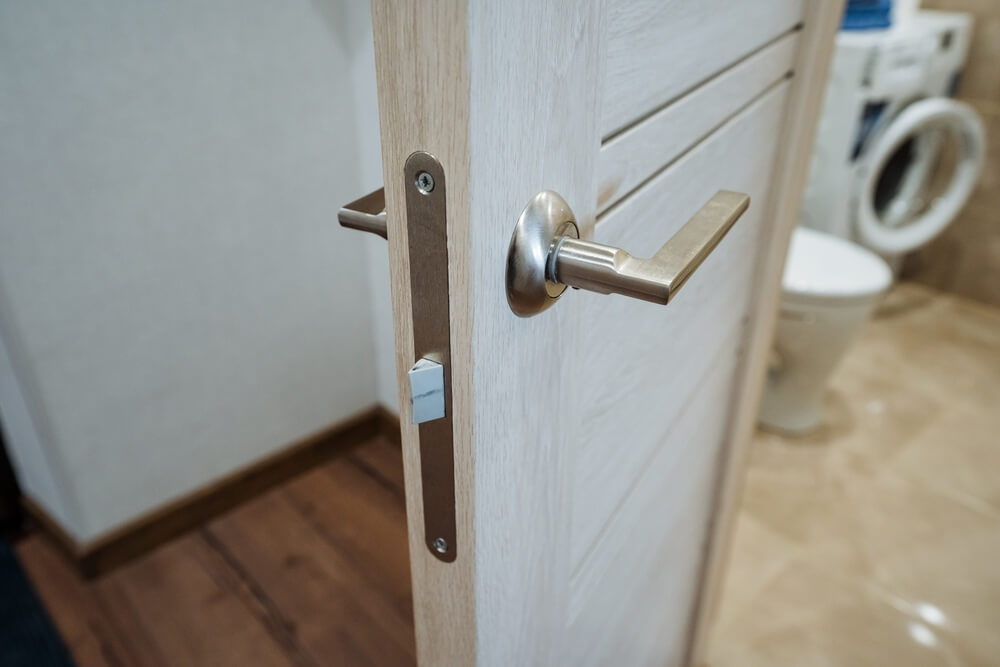What Is a Bathroom Turn-and-Release Handle? A Complete UK Guide
When it comes to bathroom doors, privacy and safety are essential. In the UK, one of the most common and reliable solutions is the turn-and-release handle (often simply called a “bathroom thumbturn” or “privacy turn”). But what exactly is it, how does it work, and why do so many British homes and businesses rely on this small but vital piece of hardware?
Let’s break down everything you need to know about bathroom turn-and-release handles—how they function, where they’re used, the safety benefits, and how to choose the right one for your property.

What is a Bathroom Turn-and-Release Handle?
A bathroom turn-and-release handle is a specific type of locking mechanism used on bathroom (and sometimes bedroom) doors. Instead of using a key, it provides privacy by means of a simple thumbturn on the inside of the door. On the outside, there is a small emergency release slot or indicator, allowing the door to be opened quickly in case of emergency.
Key features of a turn-and-release handle:
- Thumbturn (inside): Allows you to lock or unlock the door by turning a small knob.
- Release slot (outside): Lets someone open the door from the outside in an emergency, usually with a coin or screwdriver.
- Indicator (optional): Many models show “engaged/free” or “locked/unlocked” so you can see if the bathroom is in use.
These handles are fitted alongside a bathroom mortice lock or a tubular bathroom deadbolt, depending on your door and handle style.

Why Use a Turn-and-Release Handle?
The primary reasons for using this type of handle on bathrooms or toilets are privacy and safety.
Privacy:
You don’t want anyone accidentally walking in while the bathroom is in use. The thumbturn provides quick, keyless privacy, and is easier to operate than a key lock.
Safety:
Keys can be misplaced or left inside the room. In emergencies (such as a child, elderly person, or someone with a medical condition becoming unwell inside), the emergency release allows access from the outside—without the risk of being locked out.
This feature is strongly recommended for households with children or vulnerable adults. For a more detailed overview of bathroom safety features and tips, visit NHS Choices – Bathroom Safety.

Where Are Bathroom Turn-and-Release Handles Used?
You’ll find turn-and-release handles on:
- Bathrooms and toilets (in homes and workplaces)
- Ensuites
- Changing rooms
- Some bedrooms where privacy is needed but key locking isn’t required
In public buildings, schools, hotels, and healthcare settings, thumbturn-and-release systems are often a requirement for compliance with UK building regulations (see Approved Document M).

How Does the Emergency Release Work?
On the outside face of the door, there’s a discreet slot or hole. In the event of an emergency, a coin, screwdriver, or even a fingernail can be used to rotate the mechanism and open the door. This is vital in homes with young children, elderly residents, or anyone at risk of needing assistance.
Pro Tip:
Show everyone in the household how to use the emergency release, especially if you have guests or lodgers. It could prevent panic in a real emergency.

How to Choose a Bathroom Turn-and-Release Handle
When selecting a bathroom thumbturn, consider:
- Compatibility: Ensure your handle and lock are designed to work together (most UK bathroom handles will state this in the description).
- Material and Finish: Choose from brass, chrome, matt black, nickel, and more, to match your existing door hardware.
- Indicator Option: Some thumbturns show red/white or “engaged/vacant”—great for busy family homes or shared bathrooms.
- Accessibility: Larger, easy-grip designs are ideal for young children, the elderly, or those with reduced dexterity.
Explore the full range of bathroom thumbturns and privacy handles at Door Handle Company.

Fitting a Bathroom Turn-and-Release Handle
Most bathroom thumbturns are straightforward to fit, especially if you’re replacing an existing handle. Here’s a basic overview:
- Remove the old handle/lock if necessary.
- Fit the new bathroom lock or deadbolt in the door edge.
- Attach the thumbturn on the inside and the release plate on the outside.
- Test the mechanism for smooth operation and emergency release.
For step-by-step fitting instructions, see Ideal Home’s guide to fitting a bathroom door lock.

Why Shop with Door Handle Company?
- One of the UK’s widest selections of bathroom thumbturns and privacy handles
- All styles—from ultra-modern to classic—at competitive prices
- Expert advice and fast delivery
- Products designed for safety and everyday use
Ready to upgrade your bathroom security and privacy?
Shop bathroom turn-and-release handles now.

